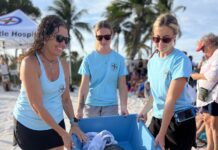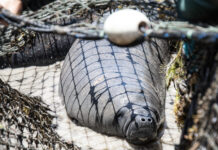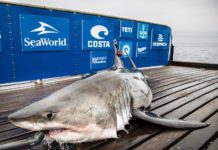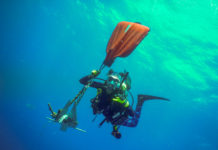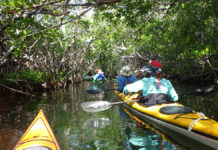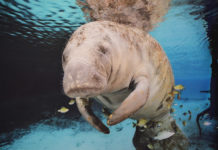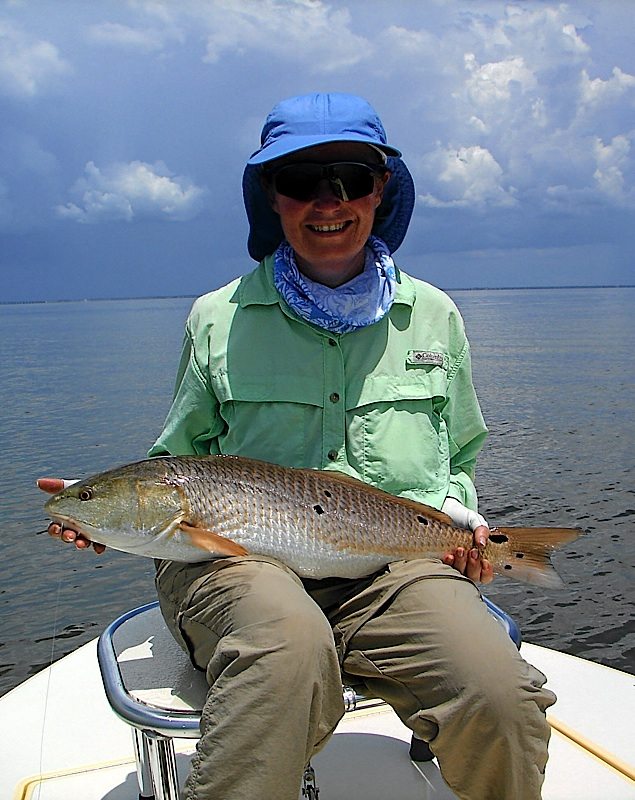
With apologies to Bob Dylan, “the seasons are a changing.” The flats angler’s winter arrived last weekend when the first cold front and stiff NNW winds blew in. Other signs of change were apparent over the last few weeks: flocks of blue wing teal in the backcountry and the sight of migrating falcons and hawks. Along with migrating birds will come our winter visitors — those with fins — including Spanish mackerel, bluefish, and pompano. Redfish numbers should increase and bigger snook will be available. More barracudas and sharks can be found on the flats especially the sporty blacktips which are a great fish on a fly rod or light tackle. As the weather changes, keep a wary eye open. Fast moving fronts can kick up seas in a hurry and spit out a water spout; the run home in a small flats boat can get hairy.
In Florida Bay (reopened in the wake of the federal government “shutdown”), redfish and snook fishing is improving. Cooler waters will have more reds on the edges of flats and channels rather than on top of the shallowest grass banks. And bigger fish show up — they seem to tolerate lower water temperatures compared to their little brothers. Snook can still be found over small sand holes. When winter arrives in earnest (by Keys’standards), the linesides move into the creeks and bays of the Everglades and hole up along thick mangrove shorelines. There are plenty of snook to be caught now although most are on the small side (1-3 pounds).
Improving the Bay’s health is a key objective of Everglades restoration. The U.S. House of Representatives just approved four specific Everglades projects in H.R. 3080 – the Water Resources and Development Act (WRDA). One authorizes the federal side of the C-111 Canal (the big canal on the 18 Mile Stretch of U.S. 1) Spreader project to improve water quality and quantity flowing into NE Florida Bay. The State of Florida had already completed work on its part of the project. With the feds finally on board, it is hoped this restoration project will proceed quickly and the Bay and its fishery put on the road to recovery.
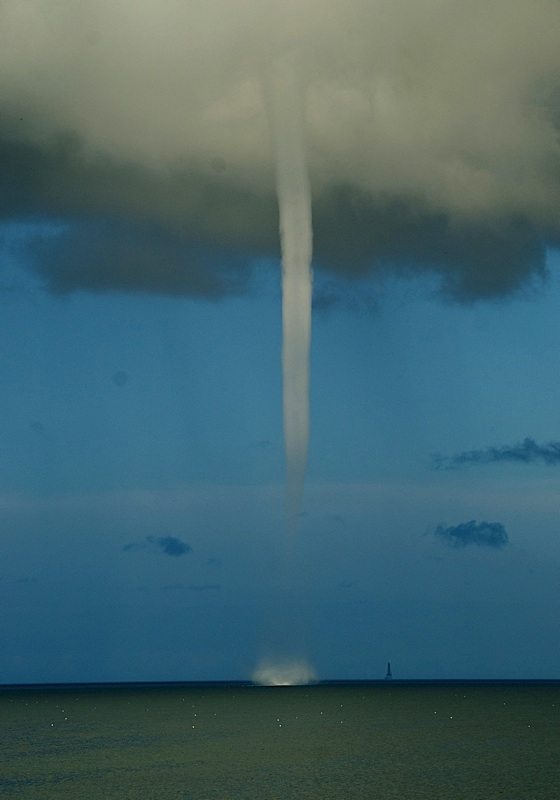
Closer to home the fish mix is changing too. Last weekend Gulfside banks north of Marathon and Big Pine were already hosting advance patrols of Spanish mackerel, a few pompano and plenty of feisty jack crevalles. Each successive cold front will drive more of these species in our direction assuring lots of rod-bending activity. The sharp-toothed mac’s like minnow imitations (flies or spoons), live shrimp, or small baitfish. Fish these on single-strand, coffee-colored wire or, if the fish get picky, use 30-pound fluorocarbon. The latter will definitely get more bites but will get cut off more often as well. Pompano like shrimp, small flies and small jigs. Jacks will eat damn near anything when they get revved up.
Blacktip shark numbers are increasing, too, and can be found regularly on the flats and edges. Most of these athletic, lithe sharks are in the 30 to 60 pound range with an occasional triple-digit bruiser. They can be enticed to eat flies, plugs, and spoons, as well as bait. To get them fired up, the best tactic is to hang a butterflied barracuda carcass off your boat, wait for the sharks to hint the scent trail, and when they home in on you give them something to eat. Blacktips are fast, strong fighters and their closely related cousin the spinner shark will take to the air in spectacular barrel rolls. One of my friends refers to them as “tarpon with teeth.”
For the hardcore, flats-devotee who wants to focus on the big three — bonefish, permit, and tarpon — we’re entering the slow season. Each can be caught during the next couple of months but it usually requires a few days of unseasonably warm weather and lighter than average winds, preferably from the SE. Permit have been around in good numbers recently with most exhibiting the lock jaw that makes them so maddening; some local anglers and guides reported fly caught perms in the 20-pound range. The big October tides also produced better bonefish action. And the slick warm conditions that prevailed at the end of last month offered a flurry of activity for small tarpon as well as prompting a few big tarpon to show up willing to eat a well-presented fly.

















